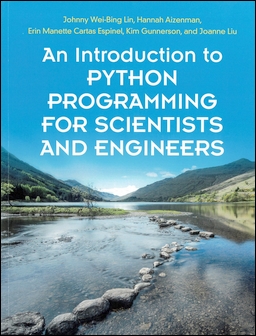書籍分類

An Introduction to Python Programming for Scientists and Engineers
作者:Johnny Wei-Bing Lin, Hannah Aizenman, Erin Manette Cartas Espinel, Kim Gunnerson, Joanne Liu
原價:NT$ 1,650
ISBN:9781108701129
版次:1
年份:2022
出版商:Cambridge University
頁數/規格:768頁/平裝彩色
參考網頁:An Introduction to Python Programming for Scientists and Engineers
版次:1
年份:2022
出版商:Cambridge University
頁數/規格:768頁/平裝彩色
參考網頁:An Introduction to Python Programming for Scientists and Engineers
內容介紹 目錄 作者介紹
- Description
- Deviates and improves upon the traditional computer science-centric approach of teaching Python to science and engineering students
- Chapters lead with practical examples from across the sciences and engineering, helping students connect programming tools with real tasks
- Concepts are introduced across multiple chapters, allowing readers to engage with topics numerous times
- Introduces software engineering tools and the best-practices used by professional developers in Part IV, to prepare students for writing their own high-quality code
- Online digital resources include numerous Jupyter notebooks, 'Try This!' exercises, student homework problems, and solutions for course instructors
Python is one of the most popular programming languages, widely used for data analysis and modelling, and is fast becoming the leading choice for scientists and engineers. Unlike other textbooks introducing Python, typically organised by language syntax, this book uses many examples from across Biology, Chemistry, Physics, Earth science, and Engineering to teach and motivate students in science and engineering. The text is organised by the tasks and workflows students undertake day-to-day, helping them see the connections between programming tools and their disciplines. The pace of study is carefully developed for complete beginners, and a spiral pedagogy is used so concepts are introduced across multiple chapters, allowing readers to engage with topics more than once. “Try This!” exercises and online Jupyter notebooks encourage students to test their new knowledge, and further develop their programming skills. Online solutions are available for instructors, alongside discipline-specific homework problems across the sciences and engineering.
分類位置:
資訊 > 程式語言


